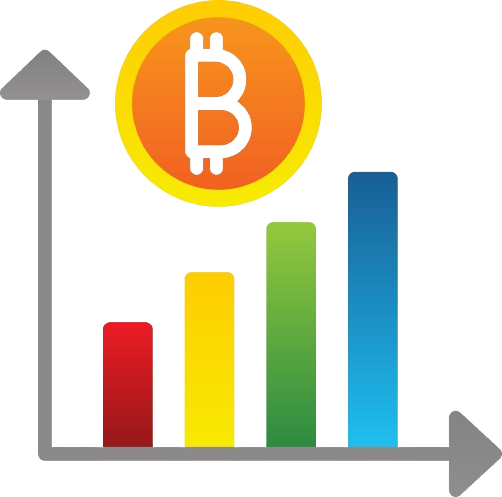
Bitcoin halving is one of the most important events in the cryptocurrency space. Occurring approximately every 4 years, halving leads to a reduction in the mining block rewards on the Bitcoin network. This has critical implications for Bitcoin’s circulating supply and the profitability of miners.
But how exactly does halving impact the value and price of Bitcoin? Does the decreased supply lead to increased demand and appreciation in Bitcoin’s price over time? Or does halving negatively affect network security and push prices down?
In this comprehensive guide, we will examine the complex dynamics of how Bitcoin halving events influence Bitcoin’s valuation and price action. By analyzing previous halvings and the underlying market forces, you can better understand how future halvings may affect Bitcoin’s value.
Understanding The Halving Mechanism
First, let’s review what exactly the Bitcoin halving mechanism entails. Halving is hardcoded into Bitcoin’s protocol to occur every 210,000 blocks mined or about every 4 years. This leads to the mining block reward being cut in half each time. For example, in 2012 the reward dropped from 50 BTC to 25 BTC, and in 2016 it went from 25 BTC to 12.5 BTC.
This gradual reduction in new Bitcoin supply is designed to control inflation and create digital scarcity. However, halving also heavily impacts the revenue of Bitcoin miners who sustain the network. After halving, their profits from mining blocks are cut in half overnight.
Keeping this background in mind, let’s explore the complex dynamics of how halving events influence the ultimate value and price of Bitcoin over time.
Historical Price Impact Of Halvings
One area to analyze is Bitcoin’s price action around previous halvings. In the months after the first halving in November 2012, Bitcoin’s price steadily appreciated from about $12 to over $1,000 by December 2013. However, before the July 2016 halving, Bitcoin’s price spiked close to the event and then declined in the following months.
While many factors affected Bitcoin’s price in these periods, the changing supply and demand dynamics from halving likely contributed. This provides a baseline for modeling potential price impacts of future halvings, with the next expected in 2024. However, unique market conditions will also influence each halving period.
Effect On Bitcoin Scarcity And Perceived Value

The most direct impact of halving is it reduces the influx of new Bitcoin, making existing coins more scarce. The rate of new Bitcoin created drops 50% after each halving. This constriction of supply should theoretically increase demand and therefore value, based on the economic principle that scarcity increases perceived value.
With halvings making new coins rare over time, Bitcoin’s programmed finite supply of 21 million strengthens its digital gold narrative. The gradually decreasing Bitcoin issuance rate through halvings enhances the perception of Bitcoin as a scarce digital asset.
Impact On Bitcoin Miner Revenues
However, halving also halves the profits of Bitcoin miners who sustain the network with computing power. After halving cuts, their block rewards, only the most efficient miners with access to low-cost electricity can remain profitable. Many miners shut down, reducing the overall network hash rate.
This decrease in mining power could potentially weaken network security and decentralization until the next difficulty adjustment when mining competition and hash rate stabilize. Weakened network effects could negatively impact Bitcoin’s value proposition as a secure decentralized asset.
Timing Of Market Response To New Supply Rates
Additionally, Bitcoin’s market price may not react instantly to new supply dynamics from halving. It could take weeks or months for the market to fully adjust to and price the decreased mining rewards and coins entering circulation.
This lag between cause and effect muddies the direct relationship between halving events and Bitcoin’s immediate price response. However, the long-term impacts on price often become more evident over time.
Other External Market Forces

Lastly, Bitcoin does not exist in a vacuum. Myriad external market forces unrelated to halving also have a significant influence on Bitcoin’s realized price at any given time. Macroeconomic conditions, investor speculation, trading activity, adoption rates, and regulatory changes are just some of the additional factors at play.
Isolating and measuring halving’s impact on Bitcoin’s value from the noise of external forces is challenging. However, halving likely plays an important role in laying the supply and demand foundation for Bitcoin’s long-term price valuation.
Conclusion
In summary, Bitcoin halving has complex, nuanced, and often delayed effects on its eventual market value and price. The reduced Bitcoin supply enhances its scarcity and perception as digital gold. However, halving also strains miner profitability which could have negative network effects.
Bitcoin’s market price reaction evolves as investors digest new supply rates. And external market forces also intertwine with halving to determine Bitcoin’s realized value.
While halving’s effects on Bitcoin’s valuation may be indirect or take time to manifest, paying close attention to these milestones provides valuable insights. Looking forward, adopting a long-term perspective on halving’s dynamics can give clues into Bitcoin’s future price potential.